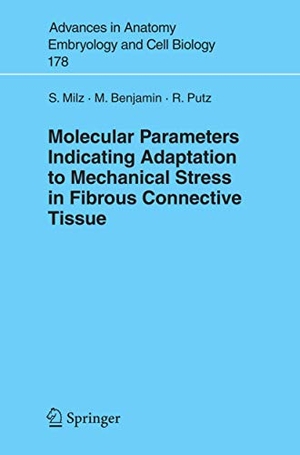Für statistische Zwecke und um bestmögliche Funktionalität zu bieten, speichert diese Website Cookies auf Ihrem Gerät. Das Speichern von Cookies kann in den Browser-Einstellungen deaktiviert werden. Wenn Sie die Website weiter nutzen, stimmen Sie der Verwendung von Cookies zu.
Cookie akzeptieren
Stefan Milz / Reinhard Putz / Michael Benjamin
Molecular Parameters Indicating Adaptation to Mechanical Stress in Fibrous Connective Tissue
- Springer Berlin Heidelberg
- 2005
- Taschenbuch
- 84 Seiten
- ISBN 9783540244745
1 Introduction 1. 1 General Remarks The connective and supportive tissues constitute a considerable amount of the biomass in human and animal organisms. Characteristically, the osseous, car- laginous, and ?brous tissues each connect a vital part (cells) with a non-vital part, i. e. , extracellular matrix (ECM). The composition of the ECM constitutes the mechanical qualities of the respective tissue. The functional role of the bone and cartilage tissues is exhaustively discussed in the relevant literature. Whereas bone tissue provides the static and dynamic stability of the system as a whole, cartilage tissue accounts for the power transfer between bones. The articular cartilage insures a fairly
Mehr
Weniger
zzgl. Versand
in Kürze